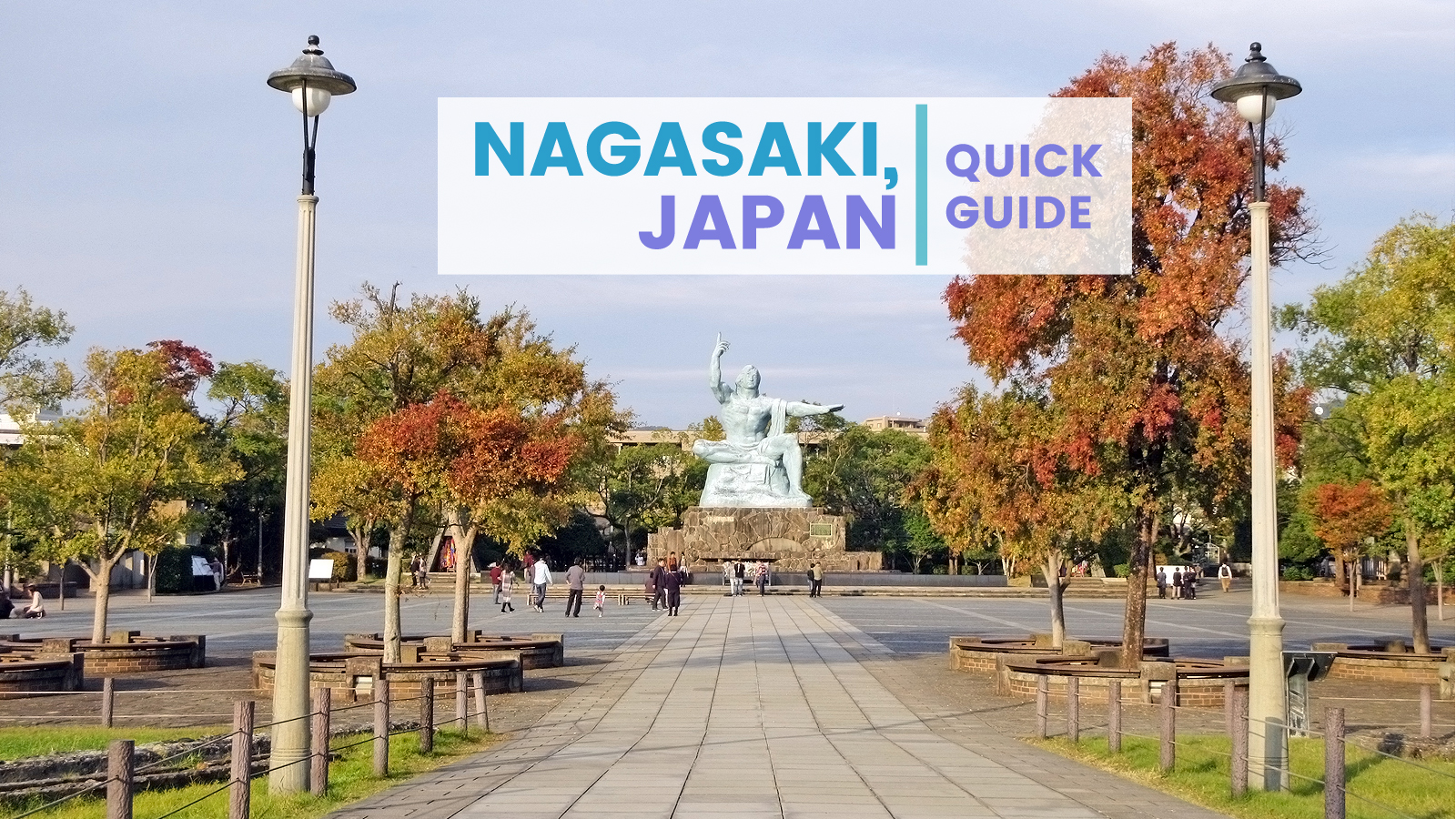Nagasaki is an interesting city to visit; it has turned itself around since World War 2. Only museums and parks will remind you of the bombing that took place decades ago. It is a vibrant metropolis with plenty to do and see and a thriving heavy industry which is at its economic core.
Best Time to Visit
Nagasaki is a great place to visit year-round; autumn (around October and November) is a good time to go because the leaves will be ablaze in different colors, and it isn’t too cold. The months of April to June are also a good time to visit.
Get In and Out
By Air
Nagasaki is easy to get to if you come from major cities in Japan such as Tokyo, Nagoya, Osaka or Fukuoka. There are direct flights from Tokyo, Osaka, and Nagoya.
By Train
You can also get to the city by train; there are Japan Railways (JR) lines that connect Nagasaki to Tokyo, Kyoto, Osaka, Fukuoka, and Hiroshima.
From Fukuoka
- You can take a limited express train from Hakata to Nagasaki. Fare: ¥4,500 (one way)
- You can also take local trains, which require transfers in between. Fare: Around ¥2,810 (one way)
Hyperdia makes train navigation hassle-free. To know how it works, you can check it here: HOW TO USE HYPERDIA for Japan Train Travel
Thinking of getting JR Pass? Check your itinerary first if you really need it and if it will help you save money. Is Japan Rail Pass worth it?
By Bus
From Fukuoka, you can take the highway bus from Hakata Station or Tenjin Bus Center. Fare: This route costs around ¥2,570 per way.
Going Around the City
Nagasaki is well-connected by public transport; you can use streetcars, buses or trains during your stay. The fare for the streetcar is ¥120 wherever you go.
Day passes are available for the bus and streetcar; this costs ¥500. You can buy a pass at JR Nagasaki’s Tourist Information Center. Show the driver the pass and the date indicated on it whenever you board. If you can’t get to your destination directly, you can transfer to Tsuki-Machi station to avoid paying the fare again. Ask the driver for a transfer ticket before alighting.
Bring enough coins or ¥1,000 bills for paying the fare if you don’t want to get the day pass.
Places of Interest
Nagasaki used to be the only port of entry of foreigners into Japan, and in most cases, they were isolated in one location to prevent their movements within the country. This has made the city a melting pot of east and west, giving it a distinctly industrial town ‘feel’. The city has also made it a point to remind visitors of the dangers of nuclear bombs.
Some attractions related to the bombing of the city include:
- Peace Park. The centerpiece of the park is a white statue. This destination is also a good place to take a leisurely stroll in.
- Atom Bomb Museum. The museum provides a harrowing look at what happened when the US dropped the atom bomb on the city. There are also stories of survivors and remnants of the bombing.
- Hypocenter Park. A black monolith stands on the epicenter of the bombing.
Some attractions related to the industrialization and western influence:
- Dejima. This used to be a place where the government isolated foreigners centuries ago. It is a tourist destination where you can see remnants of western influence.
- Glover Garden. Western industrialists played an important role in not just developing Nagasaki and Kyushu but also paved the way for industrialization in the country. The garden contains the homes of westerners who brought heavy industry to Japan.
- Oura Church. The Japanese government centuries ago banned Christianity, but the religion managed to enter the country. You’ll see some churches in Nagasaki that were the fruit of the sacrifice of martyrs; one such attraction of note is the Oura Church.
- Dutch Slope. This is a stone-paved street where foreigners used to live in. You’ll see remnants of their influence such as western design homes.
Other places of interest:
- Mount Inasa Viewpoint. Nagasaki has excellent night city views, the best place to get an overlooking view is at Mount Inasa. The lights of the city resemble a constellation.
- Temple Hopping. Nagasaki has a handful of noteworthy temples to add to your itinerary such as sofukuji and kofukuji. These are great places to visit for contemplation and to just get away from the hustle and bustle of the industrial town.
Where to Stay
Nagasaki is a budget-friendly destination for those who want to spend less on accommodation and spend more on places of interest, experiences, and food. There are hostels in different parts of the city, and dorm rooms are available. A general rule of thumb is to stay near bus/metro/train stations or attractions; this makes it easier to go to different places. Walking distance to public transport saves time as well. There are hostel dorm beds starting at USD19 to USD25 a night and private rooms are around USD34 a night.
You can visit most major attractions in two full days of exploring. If you have a few days to spare, you can do day trips to the abandoned town on Gunkanjima Island and other nearby destinations.
Tips
- To save money, buy the day passes for the streetcar and buses.
- You can visit places within the city by section as some attractions are close to each other than others. You can cluster Glover Garden, Oura Church and Dutch Slope in one day, and separate the Peace Park and Atom Bomb Museum for another.

Comments